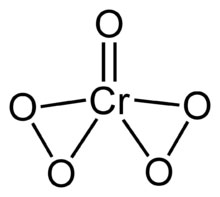 What is Chromium?
What is Chromium?
Chromium is a naturally-occurring element found in rocks, animals, plants, and soil. It is widely used in manufacturing processes and can be found in many consumer products such as wood treated with copper dichromate, leather tanned with chromic sulfate, and stainless steel cookware.
Uses
The metal chromium is used mainly for making steel and other alloys. Chromium compounds, in either the chromium (III) or chromium (VI) forms, are used for chrome plating, the manufacture of dyes and pigments, leather and wood preservation, and treatment of cooling tower water. Smaller amounts are used in drilling muds, textiles, and toner for copying machines.
Sources & Potential Exposure
Chromium occurs in the environment primarily in two valence states, trivalent chromium (Cr III) and hexavalent chromium (Cr VI). Exposure may occur from natural or industrial sources of chromium. Chromium III is much less toxic than chromium (VI). The respiratory tract is also the major target organ for chromium (III) toxicity, similar to chromium (VI). Chromium (III) is an essential element in humans.
The body can detoxify some amount of chromium (VI) to chromium (III). The respiratory tract is the major target organ for chromium (VI) toxicity, for acute (short-term) and chronic (long-term) inhalation exposures. Shortness of breath, coughing, and wheezing were reported from a case of acute exposure to chromium (VI), while perforations and ulcerations of the septum, bronchitis, decreased pulmonary function, pneumonia, and other respiratory effects have been noted from chronic exposure.
Federal Regulations
The EPA has defined that human studies have clearly established that inhaled chromium (VI) is a human carcinogen, resulting in an increased risk of lung cancer.

 Americas
Americas Europe
Europe Français
Français Deutsch
Deutsch Italiano
Italiano Español
Español
